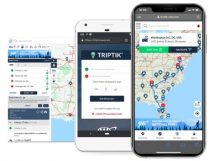
Does it feel like retaining your employees is as hard as preventing college athletes from leaving through the transfer portal? Many organizations continue to incur significant costs related to employee turnover and are continuing to struggle to retain their talent.
Employees leave organizations for many reasons. The best approach to improving retention begins with asking your workforce for their input outside of the traditional exit interview. Here are two simple ways to ask the question:
- Conduct “stay” interviews. Stay interviews provide opportunities for managers to have real conversations about what keeps their employees on their team and what might cause them to leave. The added benefit is it builds the critical relationship between manager and employee—a relationship we know has significant impact on employee retention.
- Consider an engagement survey and a handful of focus groups that allow employees the opportunity to candidly share why they stay—and why they would consider leaving.
Simply asking your employees why they stay (and why they might choose not to stay) can reveal aspects of the job you didn’t realize were hitting the mark and uncover those that missed the target. Take the time to talk with your employees and gather their feedback. The act of genuinely asking for their thoughts is always a good idea.
While the best approach to building retention programs begins with understanding the specific reasons employees have for leaving your organization, it may be helpful to understand the most common reason for leaving. Work Institute issues a report each year that captures top reasons for leaving. Career Development is again the most cited reason for leaving and has been every year since they began tracking in 2010, reflecting employees’ desire for continued professional growth.
It then becomes a question of how organizations can improve the opportunities they provide for career development. The answer here is a combination of asking employees about their career aspirations and digging into the training and development needs across your talent.
Leverage the stay interview. Stay interviews provide the perfect opportunities for managers to gain a better understanding of each employee’s development needs and desires for continued growth. Growth opportunities could include technical knowledge, leadership skills or even industry-specific continuing education.
Consider the college athlete who wants to play a different position or needs to refine a specific skill—understanding those aspirations and development needs can help create opportunities that further the team’s success. Having regular conversations about development is the best way to stay on top of employee-development needs. Stay interviews help keep development top of mind.
Also, understand the broader training and development needs across your talent. Many organizations choose to address these through leadership development programs that provide opportunities for managers and leaders to continue to build their people-management skills.
Some organizations are still promoting their high-performing technical experts to manage their teams, assuming strong technical skills equate to strong management skills, which is often not the case. These organizations are missing a critical skillset in their managers: the skills to effectively lead others.
Manager decisions should include both technical and people skills and favor the people-management skills the higher one moves up within an organization. Most successful leaders aren’t born that way; they build their leadership skills through development and experience. An effective leadership development program can help close the leadership skill gap and build collaborative leadership teams by creating a shared learning space, where managers and leaders can learn from each other and continue to build relationships across departments and teams.
To best retain your talent, ask employees why they stay and understand what they are looking for from a career development perspective. Then build the programs and practices that create those opportunities. Just as top-tier college athletic programs don’t want to lose athletes to the transfer portal, avoid losing your employees to other organizations by understanding what it takes to retain them and investing in their development.
Bethany Denny is a certified senior professional in human resources (SPHR) and is a partner in the Lexington human resources firm of People Pinnacle (peoplepinnacle.com).





